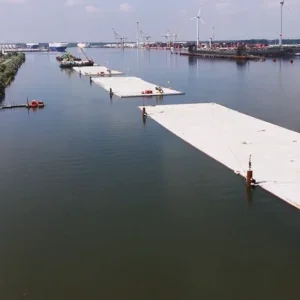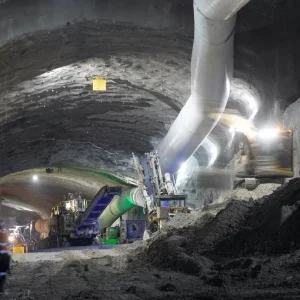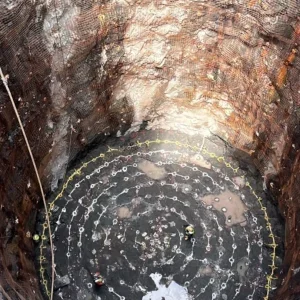California-based robotics company Petra claims its non-contact method can tunnel faster and cheaper than existing methods. By slashing the cost of tunnelling through bedrock, Petra wants to encourage utilities to bury lines underground using its new ‘Swifty’ semi-robotic drill which uses thermal spallation technology to bore through solid rock. By pulverising the rock into small pieces, it excavates without grinding, using a gas/heat mixture above 982°C (1,800°F); only sensors touch the rock, the excavation work itself is achieved by heat and gas.
In a press statement, the company said that Swifty offered a number of novel advantages over conventional microtunnelling methods. “Conventional microtunnelling machines are purpose-built for a single diameter. However, Swifty is the first robot capable of boring a range of diameters between 20-60 inches, dramatically reducing the cost of tunnelling.”
Petra’s chief technology officer Ian Wright was one of the original five co-founders of Tesla. In contrast to the grander focus of former colleague Elon Musk, Wright is targeting small-bore utility tunnels.
“No tunnelling method has been able to tunnel through this kind of hard rock until now,” said Wright. “Petra’s achievement is due to Swifty’s thermal drilling method which efficiently bores through rock without touching it.”
The company is aiming to benefit from the need for a fast, cost-effective method of burying utilities, a need which has been highlighted by recent severe weather events in the US, such as wildfires and floods.
"Our non-contact method is the next evolution of tunnelling and will usher in a new age of undergrounding utilities," said Petra CEO and co-founder Kim Abrams. "By delivering the first non-contact, boring-robot that affordably undergrounds utilities through bedrock, we can protect communities around the world from exposure to wildfires and ensure the safety of critical infrastructure in disaster-prone areas."







